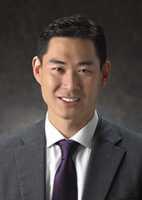08 Apr Determining the 2-Dimensional Threshold for Perception of Artificial-Appearing Lips
MedicalResearch.com Interview with:
Sang W. Kim, MD
Diplomate, American Board of Facial Plastic and Reconstructive Surgery
Diplomate, American Board of Otolaryngology – Head and Neck Surgery
Natural Face Clinics
East Syracuse, NY
MedicalResearch.com: What is the background for this study? What are the main findings?
Response: There are extensive volume of studies and descriptions in literature describing ideal proportions and measurement of facial features, objective measurements for what constitute “artificial” and “overdone” facial appearance have not been studied extensively.
But as elective and cosmetic treatment for face become more mainstream and push its limits, we felt it is important to investigate objective measurement to determine when certain facial features appear to be “artificial” and “overdone”.
We decided to study the lips because compared to other features of the face, it is more practical to translate in 2-dimension and alter objective measurements such as the height of the lips or the shapes of the curvature.
MedicalResearch.com: What should readers take away from your report?
Response: In modern days with informed (or perhaps misinformed) patients seeking cosmetic treatments and pushing the limits, the burden lies on their clinicians to counsel the patient and inform him/her when more is too much. We recognize that quantitative measurement of the lips as a fixed guideline for lip augmentation is neither practical nor realistic. There are too many variables to assume that a strict set of measurements can predict subjective perception of lips. The goal of this study was to provide some quantitative measurements to help guide clinicians in counseling their patients who are seeking lip augmentation.
MedicalResearch.com: What recommendations do you have for future research as a result of this study?
Response: Cultural and ethnic background can influence aesthetic perception. As we demonstrated difference in perception of lips between different age groups of the observers, we expect there will be significant difference in perception for the observers based on their cultural trend and ethnic backgrounds.
We also considered that geographical background will influence observers’ perceptual threshold. Future research should further determine how these additional variables affect the objective perceptual threshold.
MedicalResearch.com: Thank you for your contribution to the MedicalResearch.com community.
Citation:
Determining the 2-Dimensional Threshold for Perception of Artificial-Appearing Lips
Sang W. Kim, MD; Daniel E. Rousso, MD
JAMA Facial Plast Surg. doi:10.1001/jamafacial.2017.0052 Published online April 6, 2017.
Note: Content is Not intended as medical advice. Please consult your health care provider regarding your specific medical condition and questions.
More Medical Research Interviews on MedicalResearch.com
[wysija_form id=”5″]
Last Updated on April 8, 2017 by Marie Benz MD FAAD

